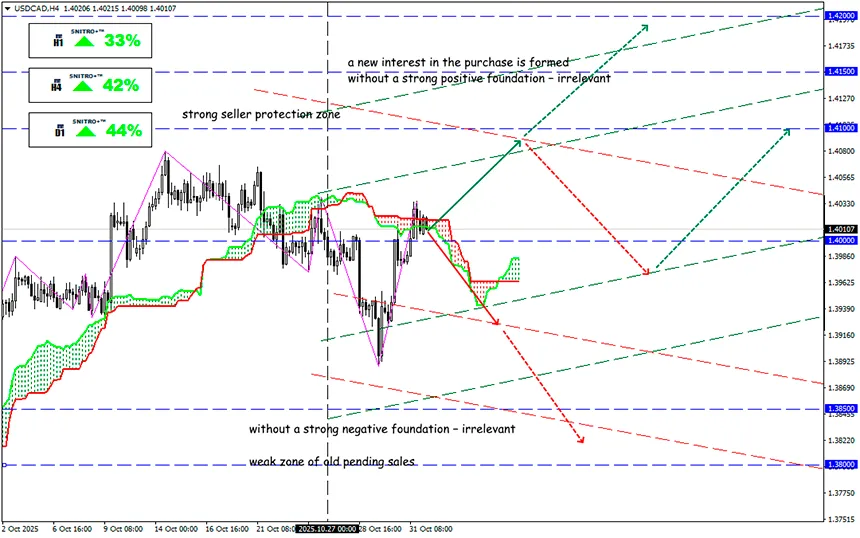Playing on Foreign Turf: China Didn’t Win, but Trump Lost

The Outcome of the Meeting Is Not in America’s Favor
USD/CAD
Key zone: 1.3950 - 1.4050
Buy: 1.4050 (on a pullback after retesting the 1.40 level) ; target 1.4200-1.4250; StopLoss 1.3980
Sell: 1.3900 (on strong negative fundamentals) ; target 1.3750; StopLoss 1.3970
The talks between Trump and Xi Jinping turned out to be not only a personal defeat for the American president but also a failure of U.S. official diplomacy. The duration of the meeting was significantly shorter than Trump had announced, and no joint statement followed. The leaders did not go beyond decisions preliminarily agreed upon by working groups, and the sides’ press comments contradicted each other on key issues.
On Friday, Trump announced his intention to reduce tariffs for China by another 10%, effectively nullifying the “tariff punishment” for fentanyl.
The situation appears paradoxical: Trump, who made his fight against China the cornerstone of his election campaign, is making concessions to Beijing while simultaneously increasing pressure on U.S. allies, including Canada.
The miscalculation is obvious — launching a tariff war without alternative sources of critical material supplies was a risky decision even during his first term. In addition, on November 5, the U.S. Supreme Court will begin reviewing the legality of Trump’s tariffs, which could significantly affect assessments of their economic impact and the Fed’s monetary policy. According to Yale University research, the average effective tariff rate on Chinese goods before the latest negotiations was 27.8%, not 57%, as Trump claimed.
After the 10% tariff cut, the actual rate is closer to 17.8%, not the stated 47%. Thus, Trump is being tougher on America’s allies than on China, on which Washington still depends for raw materials and finished products.
Negotiation results:
- Temporary reduction or suspension of part of the mutual tariffs — the average U.S. burden on Chinese goods will fall to 41%, while China’s on American goods will fall to 28%.
- No long-term agreement: tariffs could be reinstated or even increased after 90 days.
- The current arrangement is a pause during which both sides will discuss future steps.
Key issues remain unresolved:
- forced technology transfer;
- subsidies for Chinese state-owned enterprises;
- limited access for foreign companies to China’s domestic market;
- export control over rare earth metals.
Even after the tariff cuts, their level remains 2–3 times higher than before the trade war began. For importers and exporters, this still means high costs and shrinking margins.
Nevertheless, markets interpreted the meeting as a temporary de-escalation: tensions in U.S.–China trade relations will likely ease at least until August 2026 — the end of the current agreement’s term and the beginning of a new electoral cycle in the U.S. Congress.
In the short term, reduced volatility can be expected for risk assets — equities, commodities, and emerging market currencies. Previously hedged positions against escalation scenarios can be partially restored. Long-term risks, however, remain.
So we act wisely and avoid unnecessary risks.
Profits to y’all!








